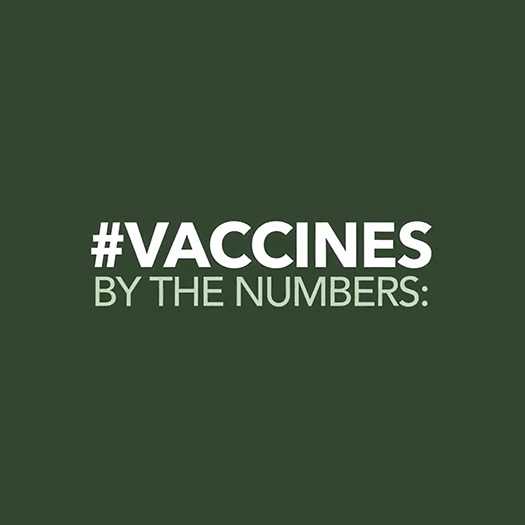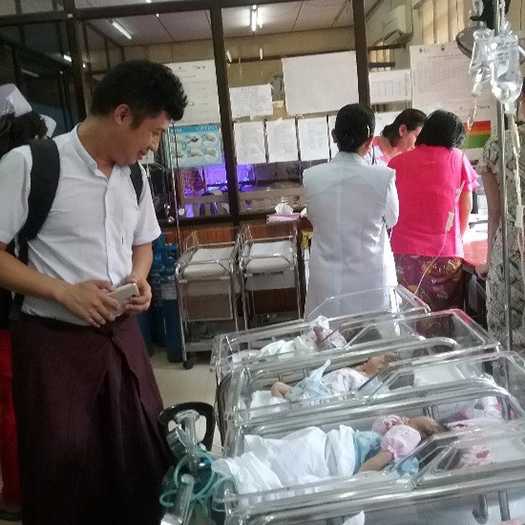In support of World Hepatitis Day, CDC’s Global Immunization Division (GID) would like to share the following:
Message from the Director of CDC’s Center for Global Health

Globally, hepatitis B virus (HBV), a major cause of liver cancer and the 7th leading cause of death worldwide[1], affects approximately 257 million persons[2]. Chronic hepatitis B virus infection develops in 90% of infants infected before 1 year of age.[3] Although most infections occur at birth or in early childhood, the majority of infected persons are not aware of their infection until decades later because they do not show symptoms initially. Luckily, prevention of hepatitis B is possible with three doses of a very effective vaccine (>95% effectiveness), which has been available since the 1980s.
The vaccine is most effective at preventing mother-to-child transmission when the first dose is given within 24 hours after birth. As of 2016, 186 (96%) countries incorporated hepatitis B vaccination in the national infant immunization schedule, but only 98 (50%) countries introduced the recommended universal hepatitis B vaccine birth dose. A substantial burden of chronic HBV infection persists because global coverage with the birth dose is still low (39%).
In the United States, the burden of chronic hepatitis B infection is 8 times higher among foreign-born residents than among native-born residents.[4] Therefore, to prevent ongoing HBV infections in the United States and their associated health care costs, it is important to prevent HBV infections overseas. Since the early 2000s, CDC has been providing direct technical and financial assistance to the World Health Organization and countries’ immunization programs to decrease the burden of hepatitis B virus infection. CDC will continue to provide technical and financial support to introduce the birth dose and improve hepatitis B vaccination globally, because we want to eliminate hepatitis!
CDC in Action
CDC experts work with partners to eliminate hepatitis among the world’s most vulnerable populations. On World Hepatitis Day we highlight some examples of this work:
Eliminate Hepatitis: Importance of the Hepatitis B Vaccine Birth Dose
Since the early 2000s, CDC has been providing direct technical and financial assistance to the World Health Organization and countries’ immunization programs to decrease the burden of hepatitis B virus infection. CDC supports hepatitis B control/elimination through vaccination worldwide through a variety of projects. Learn more about our work to improve hepatitis B vaccine birth dose introduction and coverage.
Hepatitis B – #VaccinesByTheNumbers
About 780,000 people die each year from hepatitis B complications. Many mothers don’t know they are infected and can give the disease to their babies. Additionally, about 9 of every 10 infants who get hepatitis B from their mothers become chronically infected. #VaccinesByTheNumbers
Vaccination remains the most cost-effective strategy to get on track with hepatitis B elimination in resource-limited settings by Dr. Rania Tohme, Team Lead, Global Immunization Division
Dr. Rania Tohme shares her personal expertise and experiences and discusses some of the challenges that remain with introducing hepatitis B birth dose vaccinations in resource-limited settings despite its proven effectiveness in the prevention and control of hepatitis B viral infections.
Latest GID Research
The Pan African Medical Journal – Researchers describe the status of hepatitis B control and the challenges with hepatitis B vaccine birth dose (HepB-BD) introduction and propose strategies to increase hepatitis B vaccine coverage in the World Health Organization African Region, which has approximately 100 million people with chronic hepatitis B virus (HBV) infection.
Vaccine – A recent study shows how increasing institutional delivery rates and skilled birth assistance rates, training and supervising staff, increasing community awareness, and using HepB-BD outside the cold chain where needed would increase HepB-BD coverage and prevent chronic HBV infections.
Vaccine – Researchers provide evidence that shows storing the hepatitis B vaccine outside of the cold chain (outside of refrigeration) can increase HepB-BD coverage in countries with insufficient cold chain capacity or numerous home births.
Journal of Clinical Virology – In a study of pregnant Haitian women, researchers conducted serosurveys to evaluate the risk of mother-to-child transmission of HBV infection.
[1] GBD 2013 Mortality and Causes of Death Collaborators. Global, regional, and national age–sex specific all-cause and cause-specific mortality for 240 causes of death, 1990–2013: a systematic analysis for the Global Burden of Disease Study 2013. Lancet 2015;385:117–71.
[2] World Health Organization. Global Hepatitis Report, 2017. Available at: http://apps.who.int/iris/bitstream/10665/255016/1/9789241565455-eng.pdf?ua=1
[3] WHO. Hepatitis B Vaccines: WHO position paper – July 2017. Weekly Epidemiological Record 2017; 92: 369-392.
[4] Roberts H, et al. Prevalence of chronic hepatitis B virus (HBV) infection in U.S. households: national health and nutrition examination survey (NHANES), 1988-2012. Hepatology 2016; 63: 388-397
- Page last reviewed: July 27, 2017
- Page last updated: July 27, 2017
- Content source:
Global Health
Notice: Linking to a non-federal site does not constitute an endorsement by HHS, CDC or any of its employees of the sponsors or the information and products presented on the site.



 ShareCompartir
ShareCompartir


